When it comes to fine dining, Bangkok is unlike anywhere else in the world. And that’s not a subjective assessment. All you have to do is look at the Michelin Guide. Of the 28 restaurants to win a star, eight are headed by women. If 29% doesn’t seem like much, consider just the 16 restaurants specialising in Thai cuisine. The representation goes up to 44%. In an industry notorious across the world for being a man’s domain, that’s a staggering counter-trend.
There are many reasons for it, depending on who you ask. Some say women are a natural fit for the job, with an eye for detail and an intuitive talent for stressful situations – though that doesn’t explain their under-representation elsewhere in the world. Others say it has to do with the centuries-long tradition of women-led kitchens in Thai palaces, unlike in European countries, where it was men who cooked for royalty.
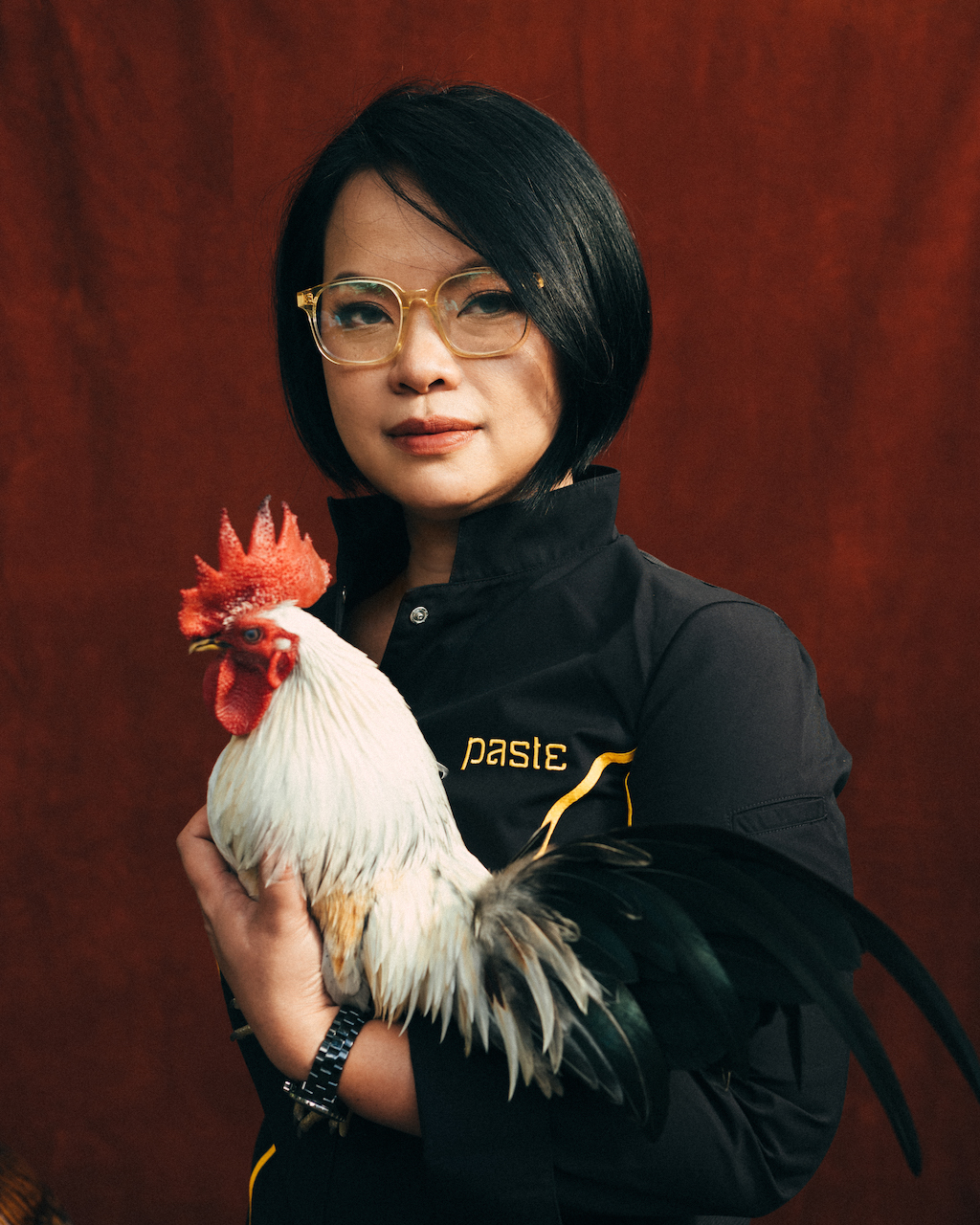
Others still, assert that Thai fine dining chefs at Bangkok’s five-star hotels have been women all along, but were overshadowed by European executive chefs, who wanted to appeal to the unadventurous palates of foreign guests. That has changed in the 2010s, as more women chefs helm standalone restaurants where they have full creative control.
Whatever the reasons, the result of so many independent women chefs is an exciting renaissance of Thai cuisine in Bangkok. Gone are the days of “elevated” green curry and pad Thai. The new guard is reviving old recipes from ancient royal cookbooks and family archives to serve dishes most visitors have never imagined and many Thais have forgotten existed.
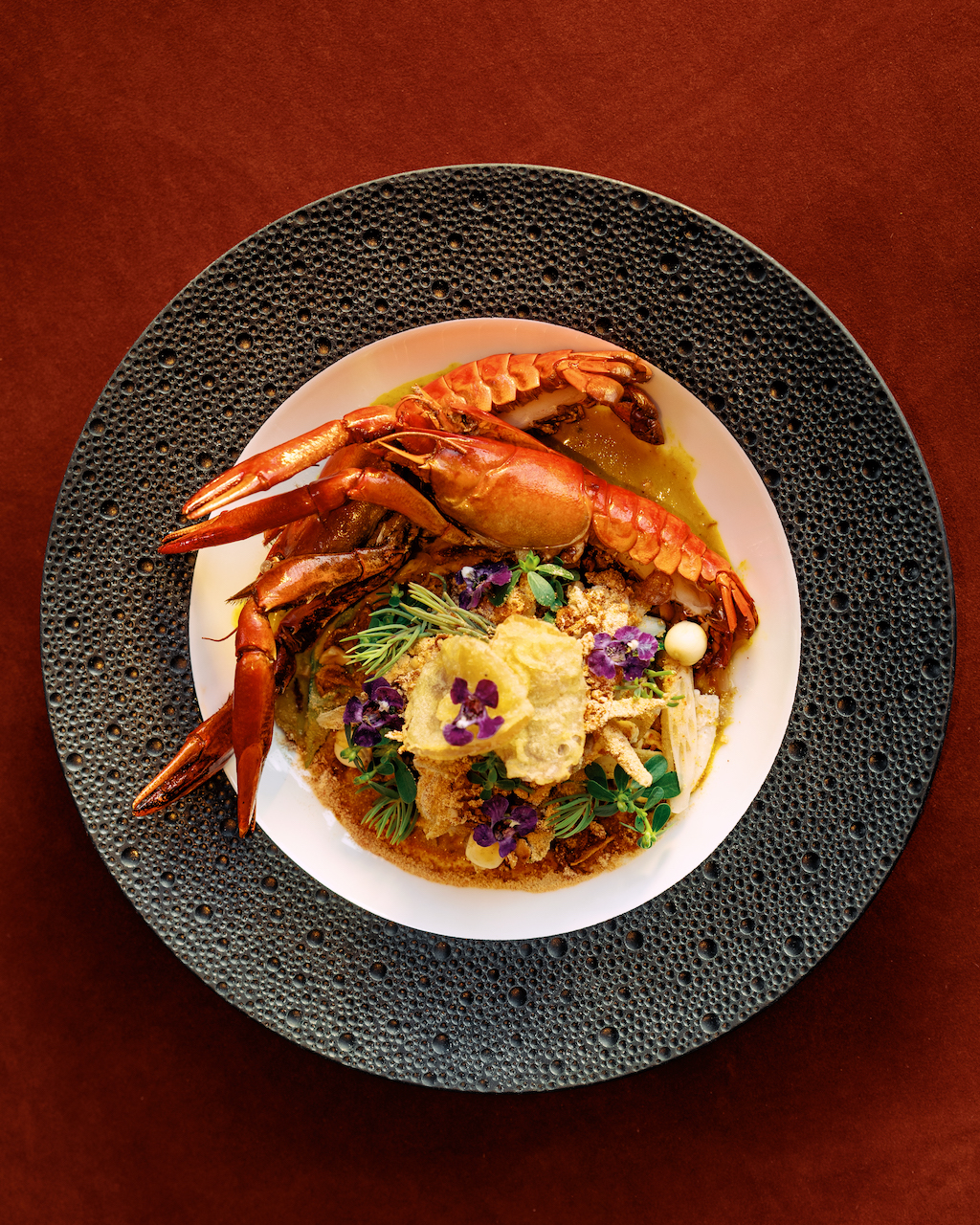
And it’s more than just a lifestyle trend. As Thailand reckons with an increasingly industrialised food system and the threat of unsustainable farming methods, the networks centred around these restaurants have the power to protect livelihood and preserve endangered culinary traditions.
Meet the women cooking Thai food like you’ve never had before, and saving Thai culture and traditions in the process.
Fighting for the future
Duangporn “Bo” Songvisava
Chef-owner at Bo.lan
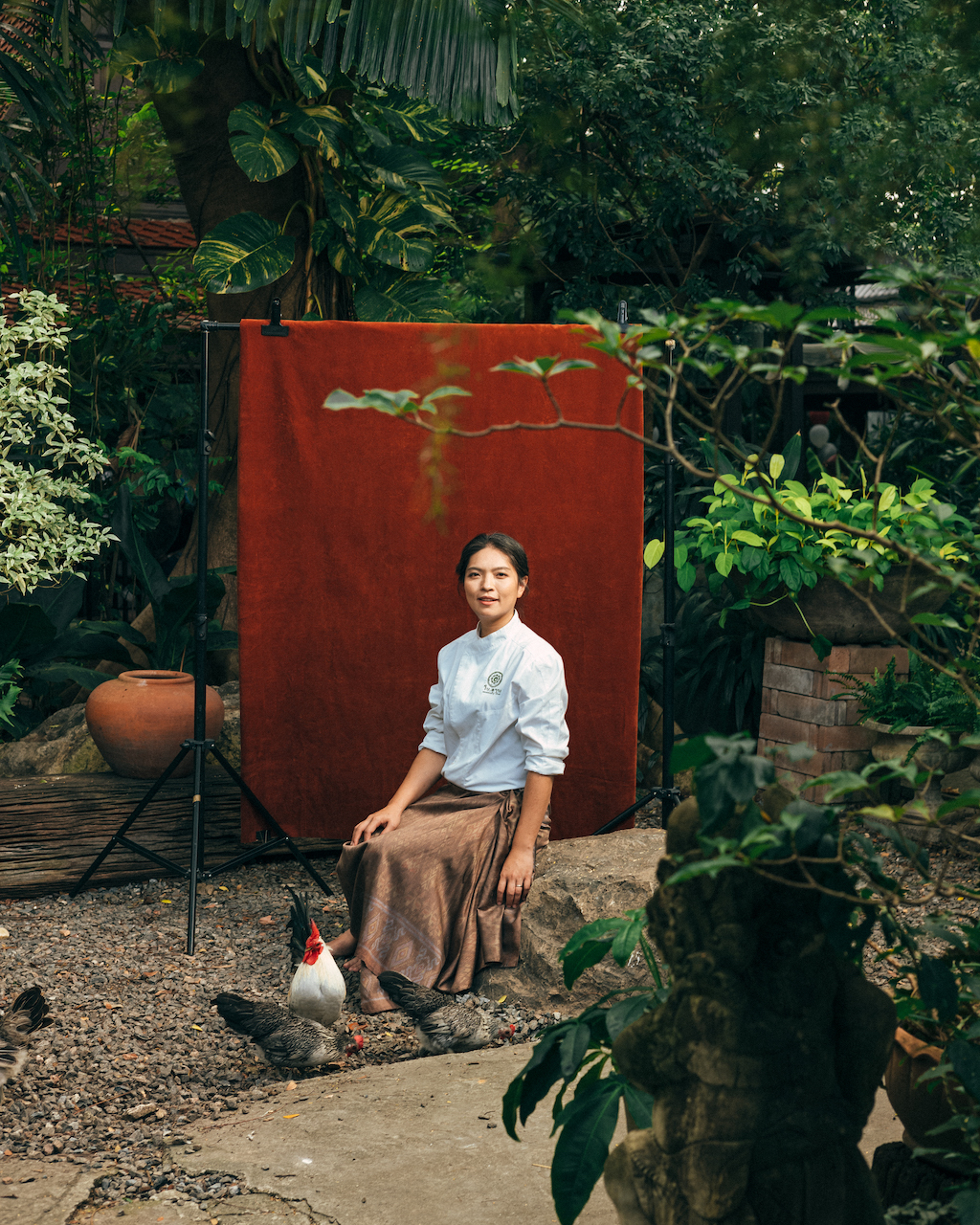 Ask Bo what dish on her menu she is most excited about, and the answer may surprise you: “Green curry,” she says with an impish laugh.
Ask Bo what dish on her menu she is most excited about, and the answer may surprise you: “Green curry,” she says with an impish laugh.
You’d expect a more obscure answer from the owner of Bo.lan, the restaurant she runs with her husband and co-chef Dylan Jones. The decade-old establishment, whose portmanteau name means “ancient”, has been a brave pioneer in the Thai fine dining renaissance. The atmospheric house-and-garden space serves complex, hard-to-make recipes discovered in old royal-court cookbooks and rescued from collective cultural amnesia. For these efforts, Bo.lan has won and retained a Michelin star for three years, while 39-year-old Bo has earned the inaugural Asia’s Best Female Chef 2013 award and appeared in her own episode on Netflix’s wildly popular Chef’s Table series in 2018.
Bo.lan’s is no ordinary green curry. “I use Thai figs from over there,” Bo says, pointing to a fruiting tree across the garden. It came with the Thong Lor compound Bo.lan moved into five years ago, but it wasn’t until a recent visit from Thai food anthropologist Krit Leulamai that Bo identified the fruits that have been littering the yard every year. “You can’t really find good green curry,” Bo laments, “and Bo.lan couldn’t just put green curry with chicken on the menu.” Far from the too-rich, too-sweet knock-offs ubiquitous across the world, the version here is balanced and layered, enhanced with fish, crab and green, nutty, creamy Thai figs.
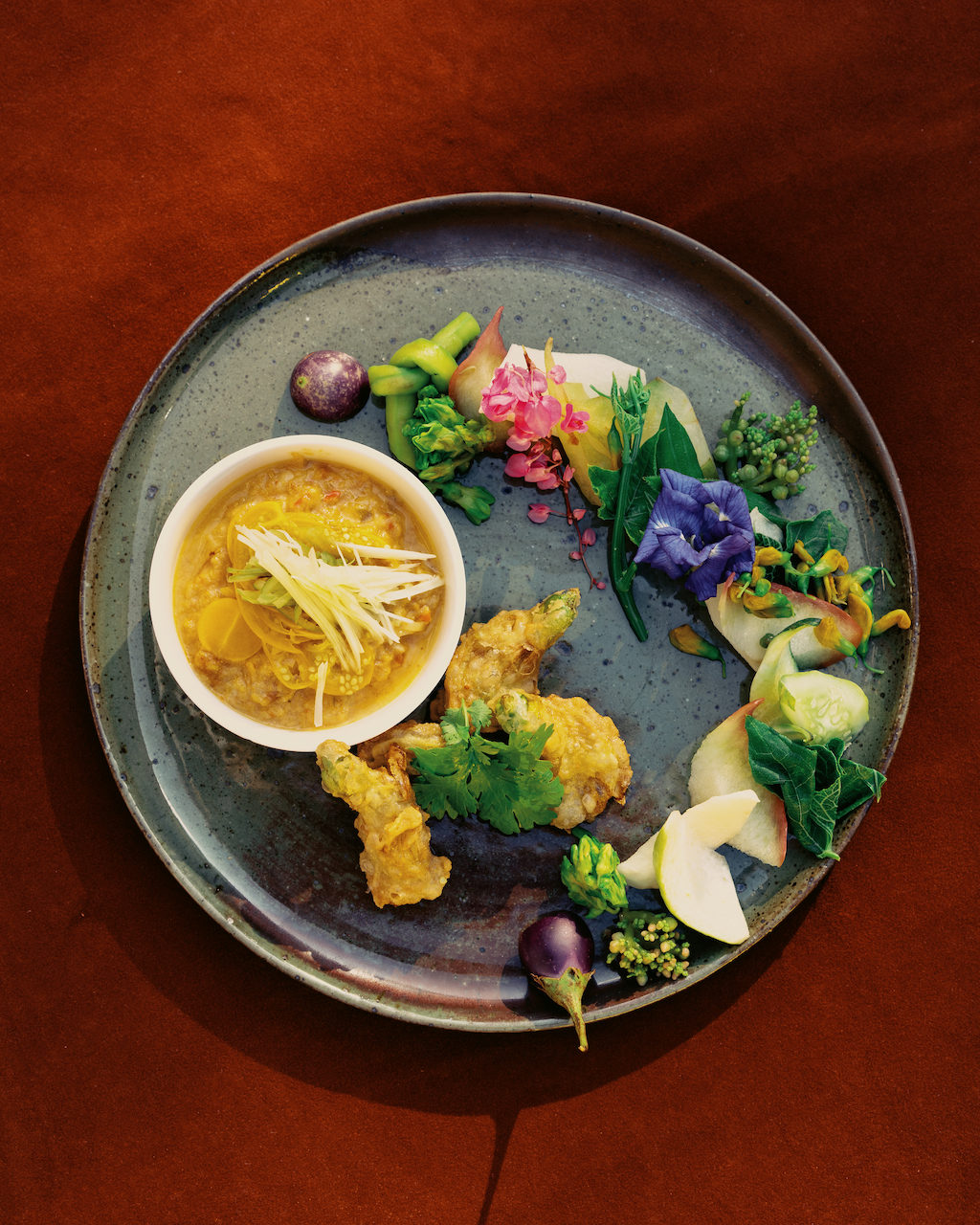
Most ingredients at Bo.lan have equally special stories behind them, from the gaba rice to the palm sugar. “If you looked at my supplier list, you’d wonder if this girl knows how to do business,” Bo says without remorse. She has a different, carefully chosen producer supplying her salt, fish sauce, soy sauce and so on. “If you ran a business properly, you’d go to a one-stop shop for everything so you have bargaining power.”
But to Bo, supporting the livelihood of traditional, sustainable Thai farmers and food producers is inextricable from reviving traditional culinary practices. “If I weren’t a chef, I would be an activist,” she says. At industry events and on Thai PBS, Bo speaks regularly about food security, single-use plastic, devastating pesticide use, monoculture industrial farming and other pressing issues. On her Chef’s Table episode, she repeatedly talked about needing to “fight for Thai food”.
Bo.lan’s lush compound is a rather peaceful headquarters for this fight. Though now open for lunch, it recently reduced its covers from 80 to 45, and elected to close for a second day each week to promote work-life balance among staff. Before dinner service, Bo’s two young children often play in the kitchen and swim in the on-site pool. Three months ago, a permaculture specialist turned the garden space into a small, educational farm growing Thai basil, dill and other ingredients that appear on the menu. A high-tech composter in the back turns kitchen scraps into sweet-smelling soil overnight.
But sit down to the Bo.lan Feast menu, and it’s easy to see what Bo is fighting for. A shot of artisanal, herbal ya dong spirit kicks off a series of amuse-bouche platters, eaten from left to right in ascending strength of flavour. The main course, served family-style, is an eye-popping spread of duck salad with longan and guava; green peppercorn relish with sweet pork belly; Muslim-style oxtail and beef shank soup; and of course the exquisite green curry – unforgettable dishes that were once nearly forgotten.
“It’s not easy to make good Thai food,” she stresses. “It takes time, effort, ingredients and knowledge. I’ve spent many years learning to make delicious food that still has a conscience. That doesn’t come cheap.”
Championing artisans
Pim Techamuanvivit
Chef at nahm
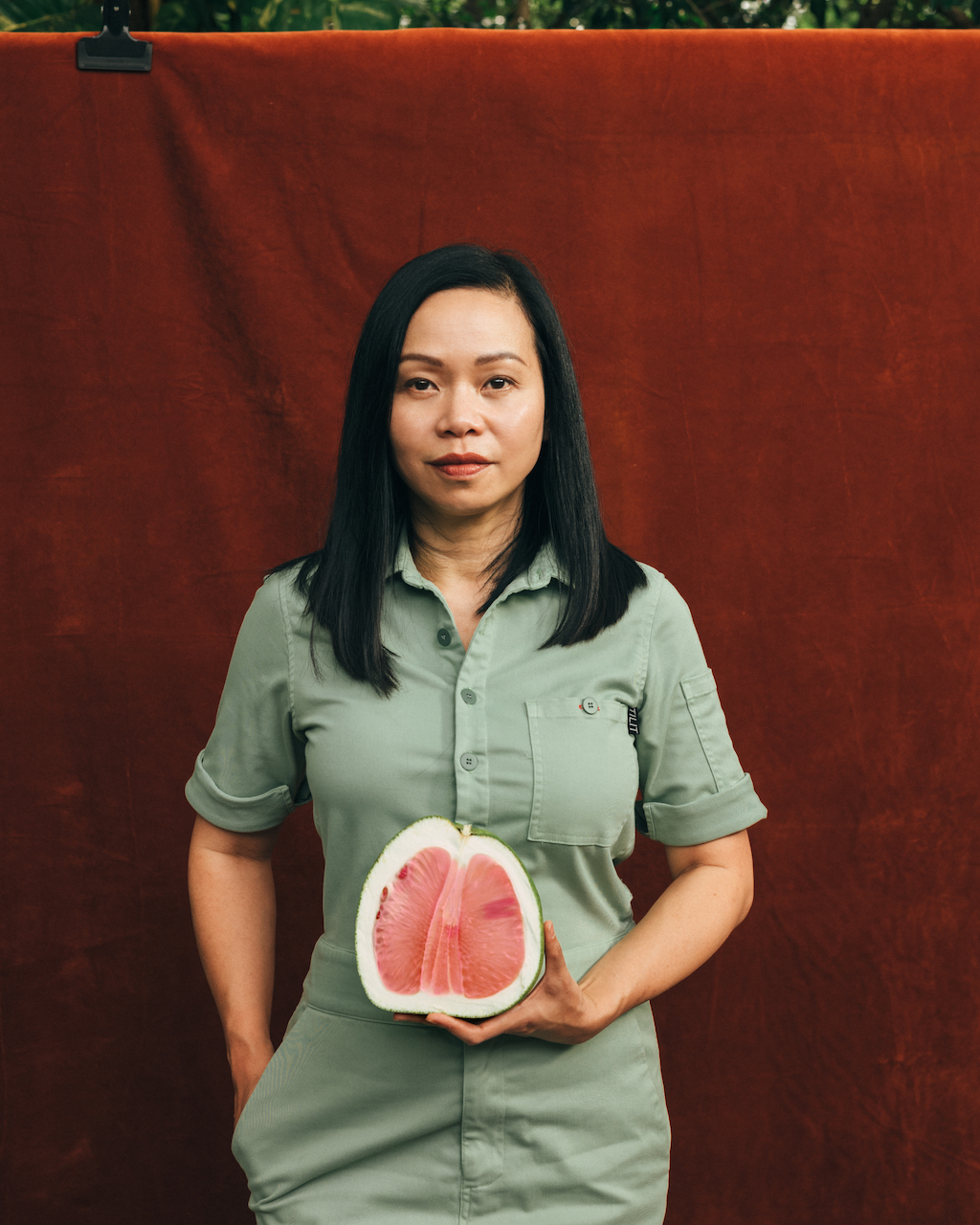 “For me Thai food is Thai women,” explains Pim Techamuanvivit as she sips on a glass of freshly squeezed orange juice over breakfast at the sleek COMO Metropolitan Bangkok. “I don’t think the way I cook is any different from the way Thai women have cooked for generations.”
“For me Thai food is Thai women,” explains Pim Techamuanvivit as she sips on a glass of freshly squeezed orange juice over breakfast at the sleek COMO Metropolitan Bangkok. “I don’t think the way I cook is any different from the way Thai women have cooked for generations.”
For Pim that way, in both of her two restaurants in San Francisco and at the Michelin-starred Thai fine dining establishment nahm downstairs at COMO, means a focus on artisanal products and the best seasonal ingredients to make the kinds of dishes she used to eat growing up as a child in Bangkok.
“I call them grandma dishes, they are the best, they are special, dishes like my grandma used to make,” expounds Pim. She indicates the kanom jin nahmprik, a wonderfully complex dish of rice noodles, spicy shrimp, coconut and golden beans which nahm has on its lunch menu as a perfect example of her approach “I grew up eating that in that particular style, flavours and textures so that’s what I want to recreate. It’s by reviving those memories in my dishes that I am keeping the story going.”
This ethos has been the core of Pim’s unconventional career in the kitchen, ever since she first decided to turn her back on a job as a cognitive scientist in Silicon Valley to open Khin Khao in San Francisco in 2014. Within a year the restaurant she started, because ‘no one else was cooking the dishes I wanted to eat’ had a Michelin star. Then in 2018 she was headhunted by hotelier Christina Ong, to take over at nahm from Australian chef David Thompson, considered by many to be the catalyst for the renaissance in Thai cuisine.
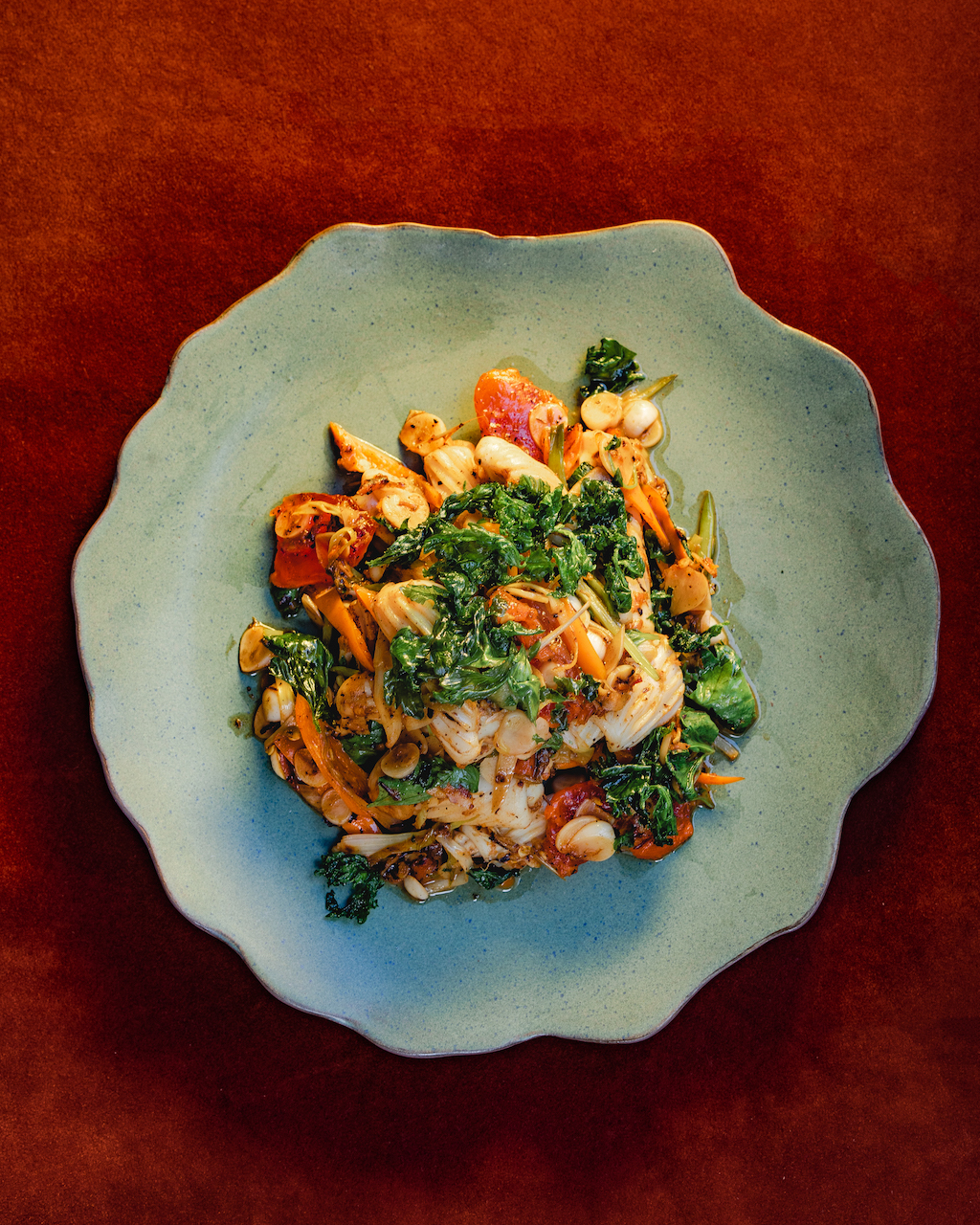
A fine-dining restaurant in a five-star hotel was also a very different proposition to the cosy familiarity of Khin Khao, but Pim was undaunted. “I found it exciting, it was a new challenge, but I was up for it,” states the 48-year-old of the decision. “Also, I am perfectly okay with failure, it’s okay to fail. If you don’t reach then you don’t get anywhere in life.”
Chef Pim also admits to the excitement at finally getting the chance to cook in Thailand and explore the range of fresh ingredients on offer at its markets and farms. That enthusiasm is infectious as she starts discussing recent discoveries, from a recent visit to a young female Karen rice farmer in Chiang Mai to potential of using the base of wild rice stems as a potential ingredient.
The commitment to championing ingredients in her dishes is clear in the recently revamped tasting menu experienced the night before in nahm’s dimly lit, stylish setting. It’s in the zingy freshness of the coriander and pickled garlic which perfectly balances the richness of the blue swimmer crab in the pu sorn klin; the earthy heat of the addictive nahm prik relish served with perfectly charred wagyu beef; and the fresh enticing crunch of the fiddlehead ferns in the pad pak goot.
It also ties in with the desire to support artisanal producers and small scale farmers still maintaining traditional techniques and recipes rather than taking the short cuts of bigger brands. “My responsibility is to find these ingredients and to ensure that there is that demand,” she explains. “We have to keep them and preserve them, they still need to be around so that we can pass them onto the next generation.” [Words: Nick Measures]
21st-century flavours
Bongkoch “Bee” Satongun
Chef-owner at Paste
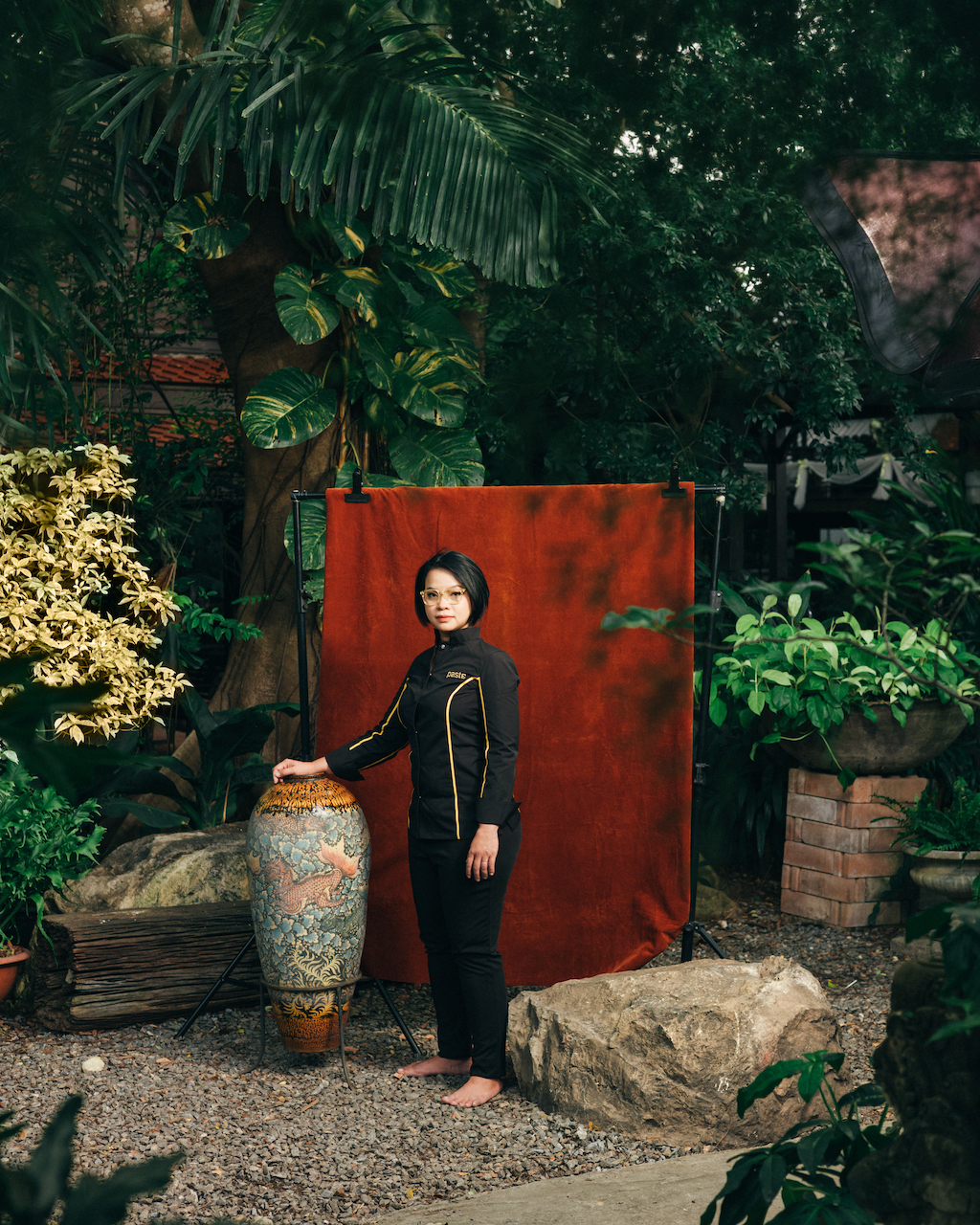 “I believe a dish without history is a dish without soul,” proclaims Bee, Asia’s Best Female Chef 2018 and chef of Michelin-starred restaurant Paste. Like her culinary peers, among them Bo.lan’s chef Bo and nahm’s chef Pim, Bee and her husband and co-chef Jason Bailey have spent endless hours studying old recipe books from the mid- to late-1800s, then finding their own point of view to recreate the dish for a modern palette. “I always respect the person who created the dish before me, then I try to interpret what they want to communicate through the dish,” she says.
“I believe a dish without history is a dish without soul,” proclaims Bee, Asia’s Best Female Chef 2018 and chef of Michelin-starred restaurant Paste. Like her culinary peers, among them Bo.lan’s chef Bo and nahm’s chef Pim, Bee and her husband and co-chef Jason Bailey have spent endless hours studying old recipe books from the mid- to late-1800s, then finding their own point of view to recreate the dish for a modern palette. “I always respect the person who created the dish before me, then I try to interpret what they want to communicate through the dish,” she says.
Indeed Thai food lovers who visit the elegant restaurant in Bangkok’s Gaysorn Plaza will be struck by how the dishes at Paste are unequivocally Thai yet unlike anything they’ve had before. “I twist the dish in layered herbal combinations,” the self-taught chef explains, “injecting more umami that synergises and highlights the surrounding herbs.”
The result is a simultaneously unique and nostalgic experience: crisp quail in a light curry with tamarind and cha muang leaves; shrimp paste relish with forest herbs and grilled prawns; salt-baked seabass in a Laotian-inspired sour orange curry – each dish topped with vibrant herbs and flowers, popping attractively against the restaurant’s restrained palette of beige and off-white.
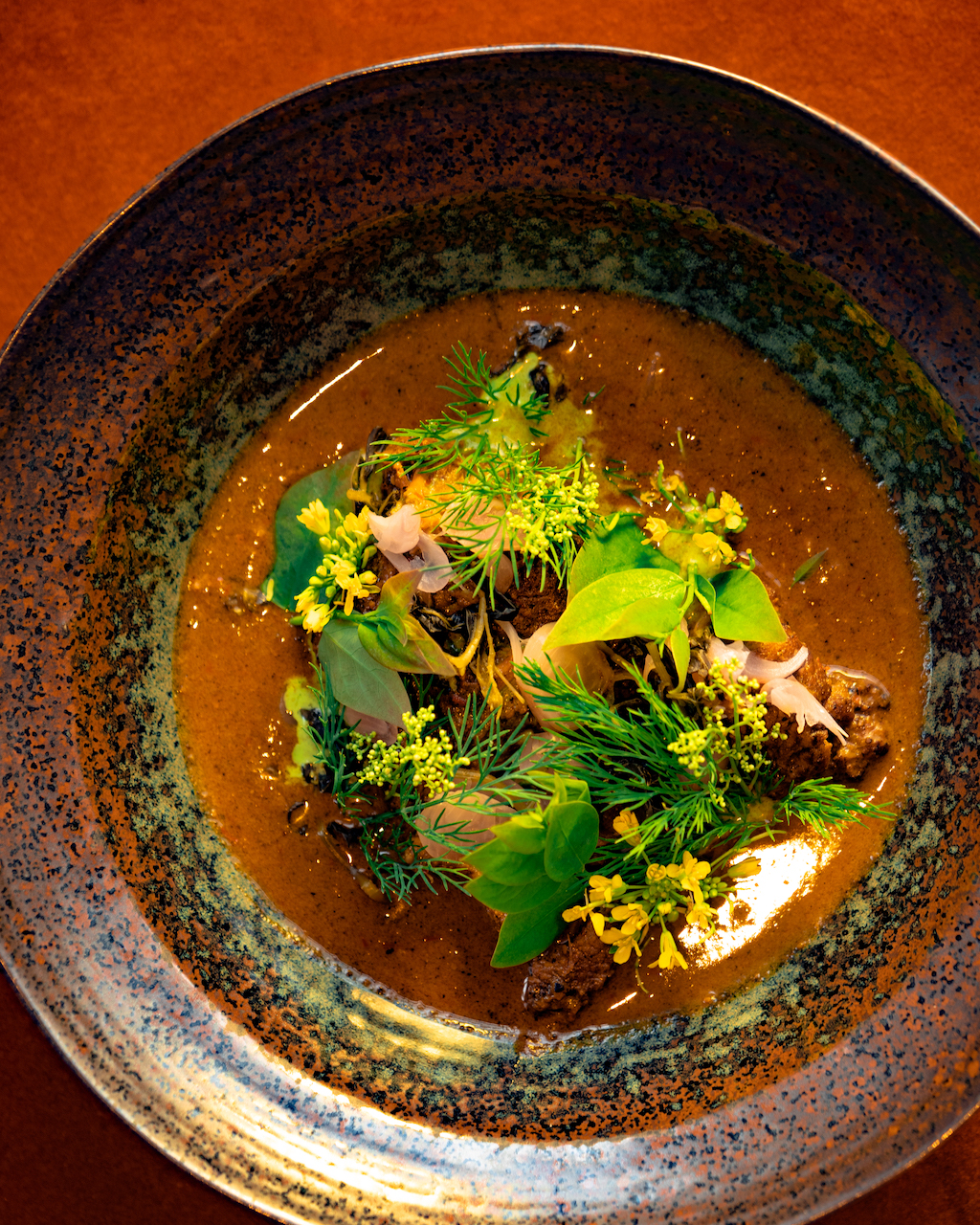
In many ways, the rise of Paste mirrors the growing appreciation for Thai cuisine both in Bangkok and abroad. When the couple first moved back from Australia in 2012, Bo.lan had just about begun to book-out their dinner service, and nahm, then manned by David Thompson, though new and buzzing, was also generating debates around authenticity. With little backing, Bee and Jason started articulating their bold vision in a modest but elegant restaurant with a narrow dining room and a handful of tables and antique recipe pages covering the walls.
Just two years later, the management of Gaysorn Village – a luxury boutique mall in Bangkok’s ritzy Ratchadamri area – came knocking, and Paste moved to a setting more befitting the ambition of its kitchen, winning a Michelin star, a spot on Asia’s 50 Best Restaurants and other accolades in the process. Less than a year ago, Paste opened another location in Luang Prabang’s Apsara Hotel and by early 2020 aims to come full circle by opening a third in Sydney. Bee says, “It will be the culmination of my career in a singular restaurant, representing Thai, Chinese and Lao cooking.”
Despite all the success and an expanding vision for the future, like her dishes, Bee herself remains grounded in her history. Asked about her favourite dishes on the menu, she cites kaeng bon, a rare, 300-year-old delicate curry from Phitsanulok province in northern Thailand. “My mother’s friend would cook it for us. There hasn’t been anyone in my experience that cooks this curry the way she does.”
Doing it her way
Sujira “Aom” Pongmorn
Chef at Saawaan
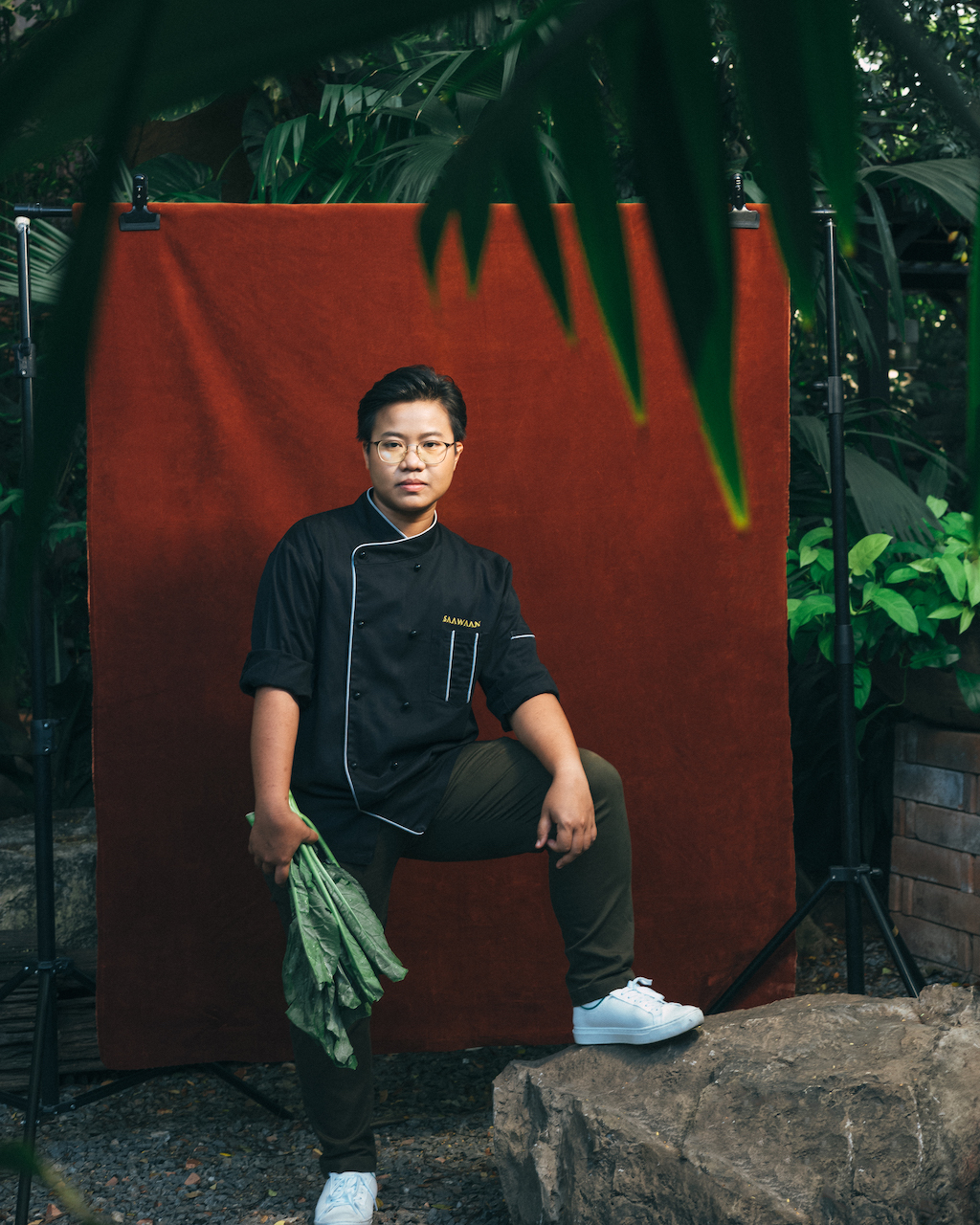 Among Soi Suan Phlu’s low-rise apartments, chef Aom’s Michelin-starred year-old shophouse restaurant Saawaan is based on a very different approach to the gaggle of Thai restaurants reviving old and regional recipes. Diners are served a nine-course degustation, each based on a Thai cooking technique or dish format: phla (salad of half-cooked protein with chilli jam), miang (pungent bites wrapped in bitter leaves), tom (brothy soup) and so on.
Among Soi Suan Phlu’s low-rise apartments, chef Aom’s Michelin-starred year-old shophouse restaurant Saawaan is based on a very different approach to the gaggle of Thai restaurants reviving old and regional recipes. Diners are served a nine-course degustation, each based on a Thai cooking technique or dish format: phla (salad of half-cooked protein with chilli jam), miang (pungent bites wrapped in bitter leaves), tom (brothy soup) and so on.
Though closely inspired by the repertoire of casual, often rural Thai food, each dish is utterly original. The phla, for example, is made not with the traditional pork, beef or squid but Japanese sea urchin flavoured with herbs, sour madan fruit and homemade chilli jam, eaten with a spoon out of the shell.
It’s risky business, innovating on flavours that hold deep sentimental value for people. “Guests sometimes say, ‘No, no, this is not Thai food. It’s supposed to be more spicy, more sweet,’ and so on,” Aom says, with no hint of frustration in her voice. “But I’m trying to do Thai food my way. Every chef has their own experiences and their own loves that they want to present. The challenge is to make your guests understand.”
Despite a resume that includes the Mandarin Oriental Bangkok’s European institution Lord Jim and Danish chef Henrik Yde-Andersen’s molecular Thai restaurant Sra Bua, sceptics will be surprised to discover just how Thai the chef’s experiences are. “My grandparents had a shop selling boat noodles in Ayutthaya, using an amazing family recipe. My parents run a fish noodle shop in front of their house in On Nut.”
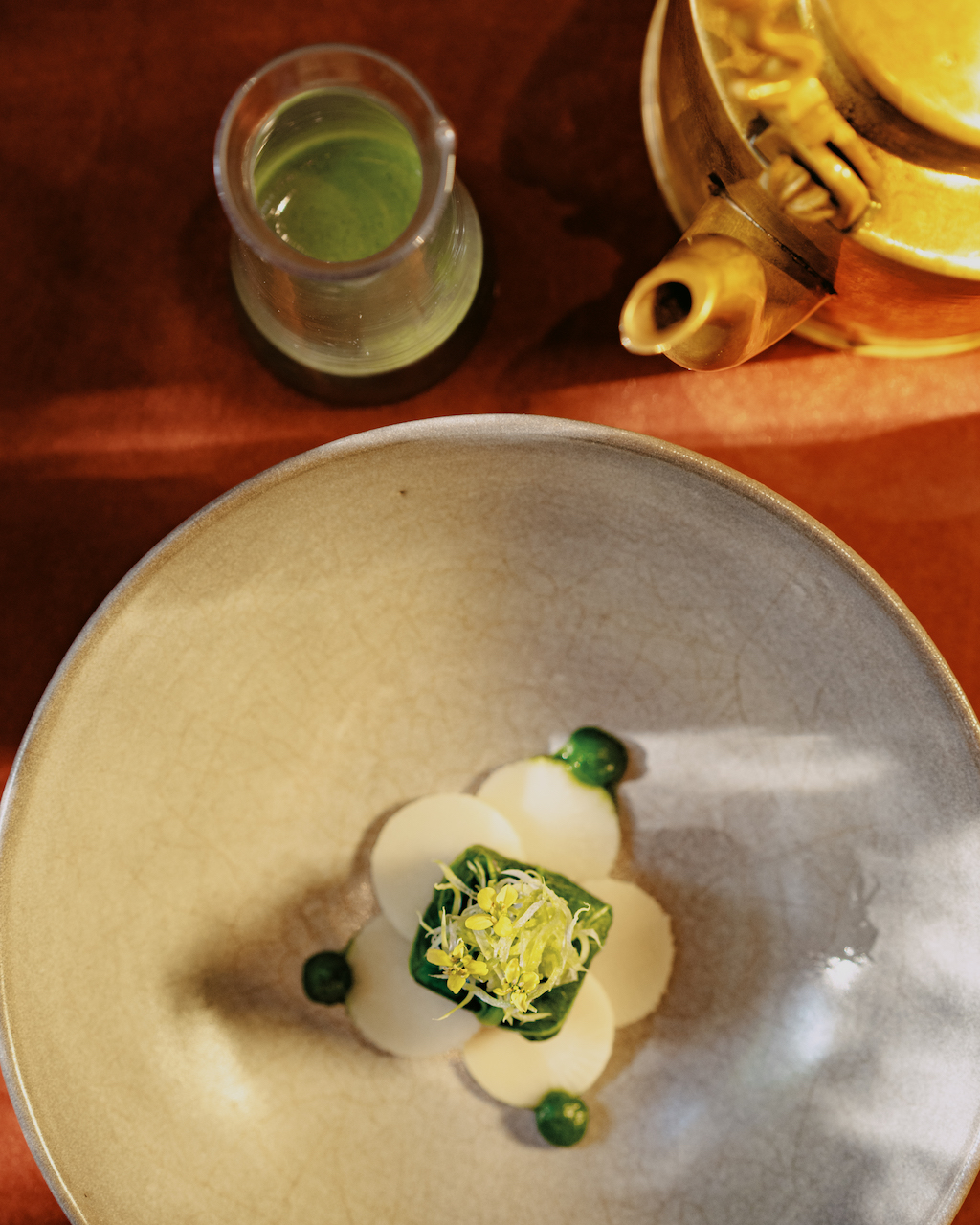
Now 33, Aom still draws from classic Thai eating. The nam prik (relish) variation that currently appears on the menu was inspired by a recent visit to Singburi province where she hoped to identify good rice suppliers. “I smelled something delicious – it was a group of farmers eating poo na (paddy crab), grilled over charcoal. They were dipping sticky rice in fish sauce and crab fat.” At Saawaan, the crab fat is infused with aromatic herbs before being served on the shell with smoked sticky rice, and diners are encouraged to use their hands.
And while imported ingredients do make the occasional appearance on the menu, Aom is committed to working with Thai farmers and producers. “We want to spread the wealth,” she says. A case in point is the charcoal-baked quail drenched in a meaty yet acidic tomato gravy, inspired by the classic lunch of papaya salad and grilled chicken. Aom worked closely with Tarn, her quail producer in Nakhon Pathom province, to get the size just right.
“I wanted to use Thai quail, but they’re so skinny and bony.” They approached a food science lab at Bangkok’s Kasetsart University for advice and developed a nutrient-packed feed of corn, brown rice and coconut milk to fatten the birds in a healthy way. “Sometimes Thai farmers don’t have the latest knowledge to make competitive products. But now Khun Tarn has shared this knowledge with her community, and we now have four farmers supplying quails to Saawaan.”
While on the surface, the food is different, Aom insists the taste is still Thai. “I love the flavours of Thai cuisine,” she says. “A single dish can be spicy, sour, salty and sweet. You can taste it all. That’s the saneh, the charm, of Thai food.”
Singapore Airlines flies to Bangkok six times daily. To book a flight, visit singaporeair.com
This article was originally published in the January 2020 issue of SilverKris magazine
The post 4 Bangkok female chefs cooking Thai food like you’ve never imagined appeared first on SilverKris.
from SilverKris
No comments:
Post a Comment